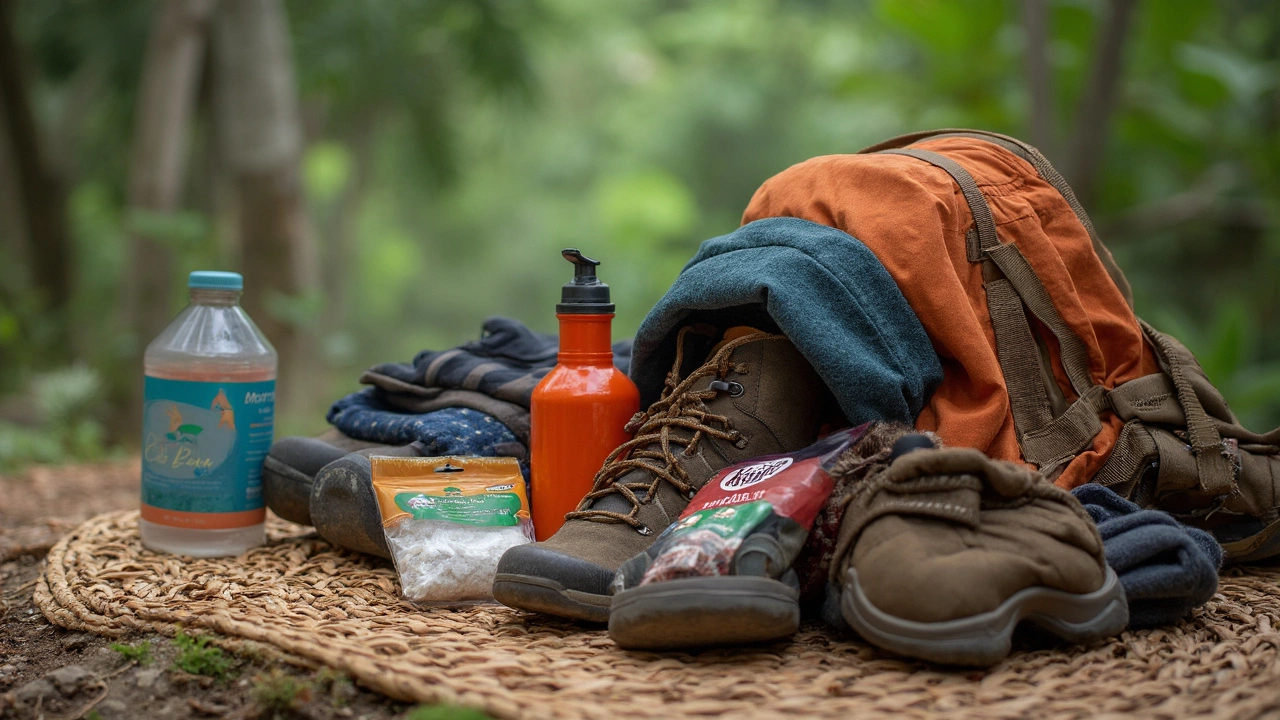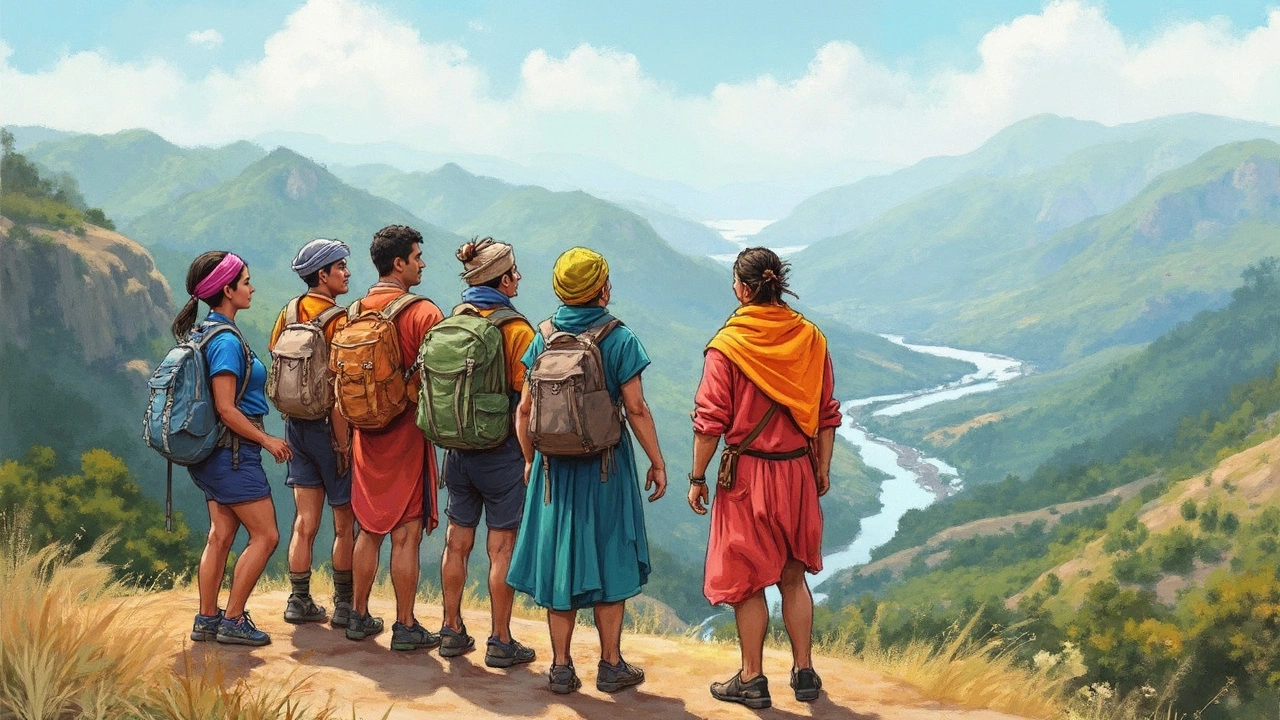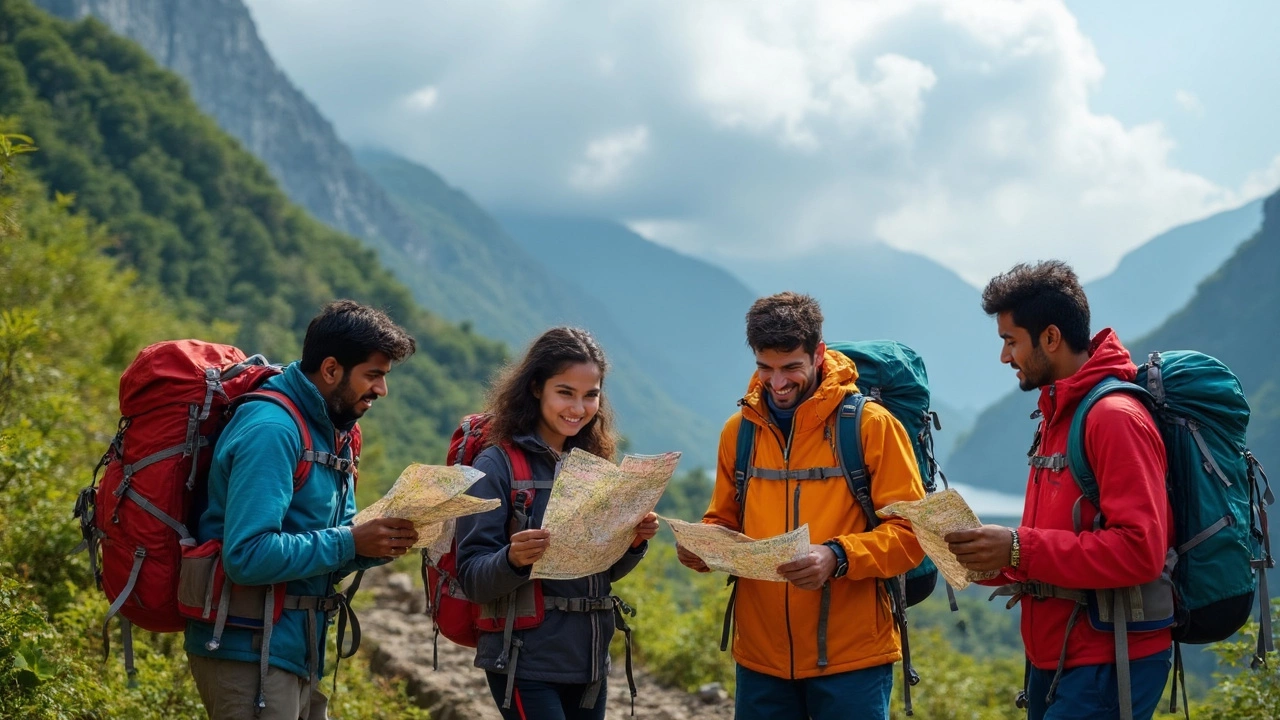Ever scroll through Instagram and spot someone on a mountain ledge in India, looking like they’ve just conquered the world? Here’s the thing: you don’t need to be a hardcore athlete or spend a fortune to start trekking over here. Starting is way simpler than it looks—if you know a few tricks.
The first thing people get wrong? Overthinking where to go. India has treks for total newbies, not just those Himalayan epics you see in travel mags. Try the Triund Trek near Dharamshala if you want a taste of the mountains that you can actually finish in a weekend. Same goes for the Nag Tibba trek near Mussoorie—it’s friendly, pretty, and you won’t feel like quitting halfway up.
- Figuring Out Where to Trek
- What to Pack and Wear
- Finding the Right Trekking Group or Guide
- Understanding Trail Culture and Local Rules
- Staying Safe (And Having Fun)
Figuring Out Where to Trek
Picking your first trek can feel like scrolling a food app—so many options, and every place looks good in photos. The trick is to narrow it down based on your time, fitness, and what experience you actually want. Don't just go for the biggest mountain on the map. India has treks from easy strolls to week-long climbs. If you’re new, start small, see how you feel, and then level up from there.
The trekking India scene can be sorted by region. Everyone thinks 'Himalayas' right away, but there’s great stuff in the Western Ghats and Northeast too. Here’s a quick idea of where you could go:
- North (Himachal Pradesh, Uttarakhand, Jammu & Kashmir): Most famous. Triund, Kedarkantha, Valley of Flowers, Hampta Pass, and Sandakphu are all beginner-friendly.
- West (Maharashtra, Goa): Try Rajmachi or Harishchandragad if you only have a weekend. The Sahyadris are lush, especially right after the rains.
- South (Karnataka, Kerala, Tamil Nadu): Coorg offers easy forest treks. Kerala’s Agasthyarkoodam and Wayanad are popular for first-timers.
- Northeast (Sikkim, Arunachal Pradesh, Meghalaya): Dzongri Trek in Sikkim or the Living Root Bridges in Meghalaya—epic views, different culture.
Still not sure what’s ‘easy’ or ‘hard’? Check the average distance and altitude gain. For beginners, keep it under 15 km per day and 3500 meters above sea level. Higher can mess with your head (hello, headache and nausea).
| Trek Name | State | Distance (km) | Days | Max Altitude (meters) |
|---|---|---|---|---|
| Triund | Himachal Pradesh | 9 | 1-2 | 2,850 |
| Nag Tibba | Uttarakhand | 16 | 2 | 3,022 |
| Rajmachi | Maharashtra | 16 | 2 | 2,710 |
| Dzongri | Sikkim | 21 | 5 | 4,020 |
Ask around: Local trekking clubs and travel groups (like Indiahikes, Trek The Himalayas) list real difficulty levels, past trip reports, and photos that aren’t retouched. Social media groups are full of people who share fresh info on trail conditions and even offer lifts or gear advice.
What to Pack and Wear
If you’re just getting into trekking India, you don’t need a suitcase full of technical gear—just the good basics. People usually overpack or under-think it, so here’s what’s actually useful for most treks:
- Footwear: Go for lightweight trekking shoes with good grip. You really don’t need those massive heavy boots unless you’re on snow or rocky glaciers. Decathlon has shoes starting at ₹1,800 that hold up for most beginner treks.
- Clothing: It’s all about layering. Bring a moisture-wicking t-shirt, a thin fleece or hoodie, and a waterproof jacket if rain is likely. Add thermal wear for higher altitudes (above 3,000m, the nights get cold even in May).
- Pants and Socks: Track pants or trekking pants work better than jeans. For socks, 2-3 pairs of sports or wool socks will save you from blisters.
- Bag: A backpack between 30–50L is perfect for 2-3 day treks. Make sure it sits snugly on your hips so your shoulders don’t hate you later.
- Other Essentials: Cap or hat, sunglasses, sunscreen (SPF 30+), a reusable water bottle (aim for 2L a day), and a basic first aid kit (band-aids, painkillers, and any meds you need).
- Extras: Headlamp or torch, power bank for your phone, and a few snacks like energy bars or nuts help a lot.
| Month | Day | Night |
|---|---|---|
| April | 12–18 | 3–8 |
| June | 16–22 | 8–12 |
| October | 10–15 | 0–5 |
If you’re joining an organized trek, they usually share a packing list. Skip heavy stuff like extra shoes or big bottles of shampoo. Go simple. Anything super-special (like crampons for snow) will be mentioned by the guide—it’s rare you’ll need such things as a beginner.
One more tip: try your shoes and backpack on a short local walk before the actual trek. Blisters and sore backs are the main reasons people turn back early, and you don’t want that ruin your first adventure.

Finding the Right Trekking Group or Guide
Heading out alone on unknown trails can be risky, especially if you’re new to trekking in India. There’s no shame in going with a group or a guide; actually, most beginners do. The right support makes everything less stressful—from route finding to emergency help. You also meet cool, like-minded people who won’t roll their eyes if you stop every ten minutes for photos.
When you search online, you’ll get bombarded with dozens of trekking companies. Not all are equal. Go for established ones like Indiahikes, Trek The Himalayas, and YHAI. Indiahikes, for example, has guided over 50,000 trekkers safely and always uses certified trek leaders. It’s not about luxury—it's about not getting ripped off or ending up lost.
Local guides can be awesome too. They know the shortcuts and the good spots for chai breaks. If you head to a hill station, ask at local hostels or cafes; they almost always have contacts. You’ll support local folks and get insider tips you won’t find on Google.
Here’s what to check before you book any guide or group:
- Best treks India experience: Does the company or guide have a solid track record in the area you want to visit?
- Safety: Do they mention backup plans, first-aid kits, and certified leaders? Trekking companies should have government registration.
- Group size: Smaller is better if you want a less crowded feel—aim for 12 or fewer people per group.
- Cost breakdown: Get clear info on what’s included (meals, tents, transport). Cheap deals aren’t always safer.
- Reviews: Check Google, TripAdvisor, and Facebook for real feedback. Watch for sketchy, fake-sounding comments.
If you’re wondering how much people usually pay, here’s a quick sample:
| Trek Name | Company | Price (INR) | Duration |
|---|---|---|---|
| Triund | Indiahikes | ₹2,500–₹3,000 | 2 days |
| Nag Tibba | Trek The Himalayas | ₹3,799 | 2 days |
| Kedarkantha | YHAI | ₹7,000 | 6 days |
Never pay the full fee up front for small, lesser-known groups. Always ask for receipts and contact numbers. Finally, trust your gut—if someone makes you feel uncomfortable or overly pushy about a deal, walk away. There’s no shortage of good guides in India. Take your time. It’ll seriously shape how much you like your first trek.
Understanding Trail Culture and Local Rules
If you’re new to trekking in India, there’s a whole vibe on the trails that’s different from hiking back home or in other countries. Each region comes with its own unspoken do’s and don’ts, shaped by local communities and the type of terrain. Ignoring them isn’t just rude, it can get you into sticky situations—like being banned from a trail or fined by forest officers.
You’ll notice some basic rules no matter where you go. For starters, don’t litter—most Indian treks now have ‘carry in, carry out’ policies. On popular routes like Kedarkantha or Sandakphu, you’ll see volunteers and even guides double-checking people’s trash. Caught tossing a plastic wrapper? Fines can go up to ₹5,000 in Himachal Pradesh and Uttarakhand. Here’s a quick look at some common penalties in popular trekking states:
| State | Common Fine (INR) | Reason |
|---|---|---|
| Uttarakhand | ₹5,000 | Littering plastic |
| Himachal Pradesh | ₹5,000 | Littering, disturbing wildlife |
| Sikkim | ₹10,000 | Unregistered trekking, trespassing restricted areas |
Trekking routes often run through village lands or tribal territories. Always ask before taking photos of people or their homes. On trails around the North-East or Spiti, locals might expect a simple greeting or even a small donation if you wander into monastery grounds. Shoes off inside temples—no questions asked!
- Respect signs about restricted paths—these aren’t just for show. Some are closed to protect wildlife or because of landslides.
- Alcohol and loud music? Leave them at your guesthouse. Indian trekking routes are usually quiet, and it’s just polite to keep noise down especially near campsites.
- If you’re trekking during local festivals, check ahead—sometimes trails get closed, or guesthouses fill up with pilgrims, not trekkers.
- Solo women trekkers are pretty common now, especially in tourist spots, but always follow gut instincts, stick to known routes, and book with registered guides if you’re in remote places.
One big thing about trekking India: it’s not just about the mountains. You’re stepping through cultures, rural homes, even grazing cows. Being aware of the rules keeps everyone—local and outsider—happy and safe on the trail.

Staying Safe (And Having Fun)
Trekking can be the adventure of a lifetime—unless you end up nursing a twisted ankle or searching for your group in the fog. Trust me, a little prep goes a long way. Safety sounds boring until you need it.
First, don’t ignore local weather warnings. Mountains, especially in places like Himachal or Uttarakhand, can turn wild in minutes. Don’t try to act tough; if locals say turn back, listen. GPS isn’t always reliable—some trails lose signal, and batteries drain fast in the cold.
Here are some totally non-negotiable safety basics a lot of people miss:
- Always tell someone your route and expected return time.
- Stick with your group. Don’t let that Instagram moment lure you onto a side path alone.
- Bring enough water—hiking in India gets sweaty fast. Don’t count on springs or streams being safe to drink.
- Pack some energy snacks. Parle-G or peanuts work great if you’re on a budget.
- Carry a basic first-aid kit: think band-aids, painkillers, and something for blisters.
- Respect wildlife. Don’t try to feed monkeys, and avoid stray dogs.
If you run into trouble, don’t panic. Locals are usually super helpful. Government agencies like the Indian Mountaineering Foundation have helplines, and trekkers have literally been rescued thanks to good signal and a bit of luck.
The Times of India quotes an experienced trek leader: “Most accidents happen when trekkers ignore simple rules—like walking after dusk or separating from the group. Sticking to basics saves lives.”
If you want some numbers, here’s how the risks stack up for new trekkers on popular routes:
| Trek Name | Annual Trekkers | Reported Incidents (2024) |
|---|---|---|
| Triund | 45,000 | 7 minor injuries |
| Nag Tibba | 32,000 | 3 minor injuries |
| Kedarkantha | 28,000 | 4 minor injuries |
So yeah, actual major accidents are rare, especially if you follow the basics. But don’t slack off. Bring the trekking India mindset: be curious, follow the rules, and actually enjoy the wild. Half the fun is swapping silly trail stories—with everyone in one piece at the end.
